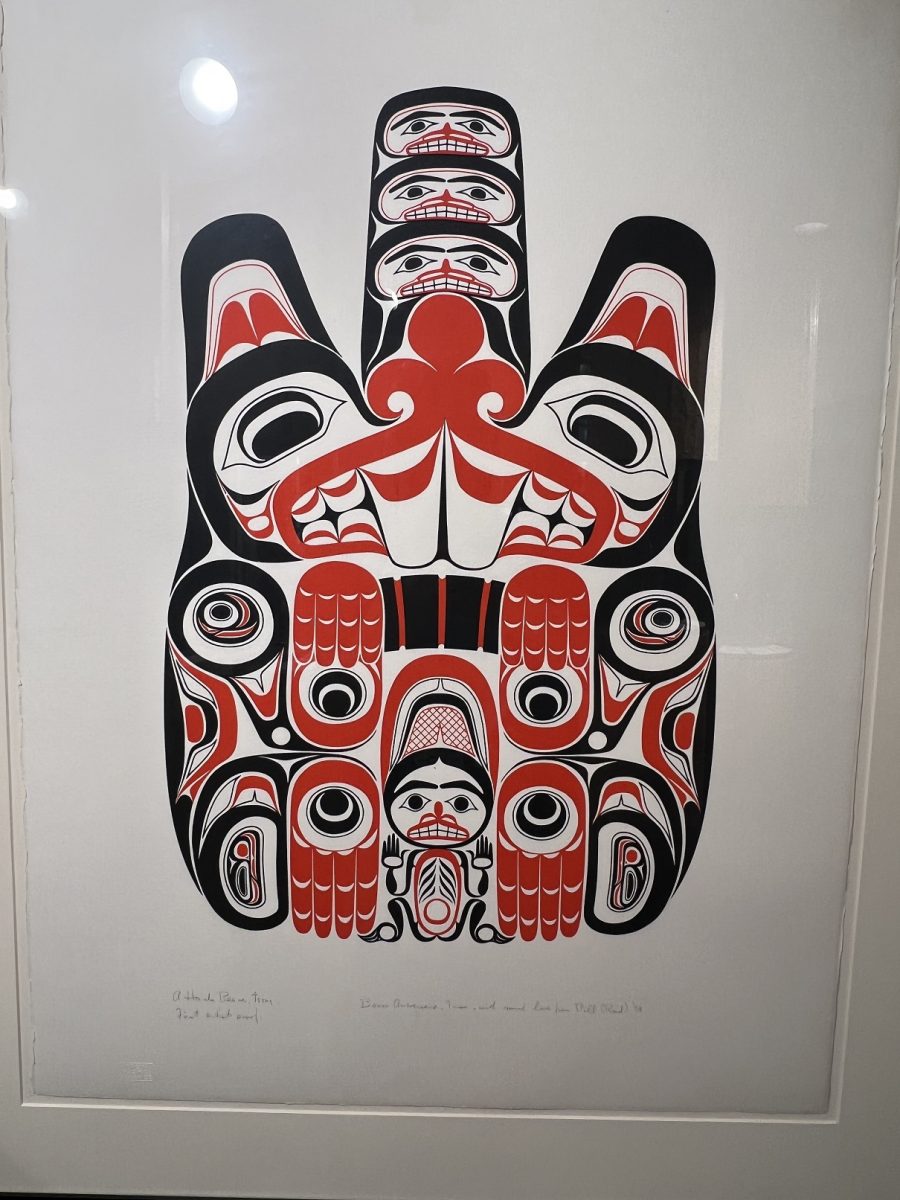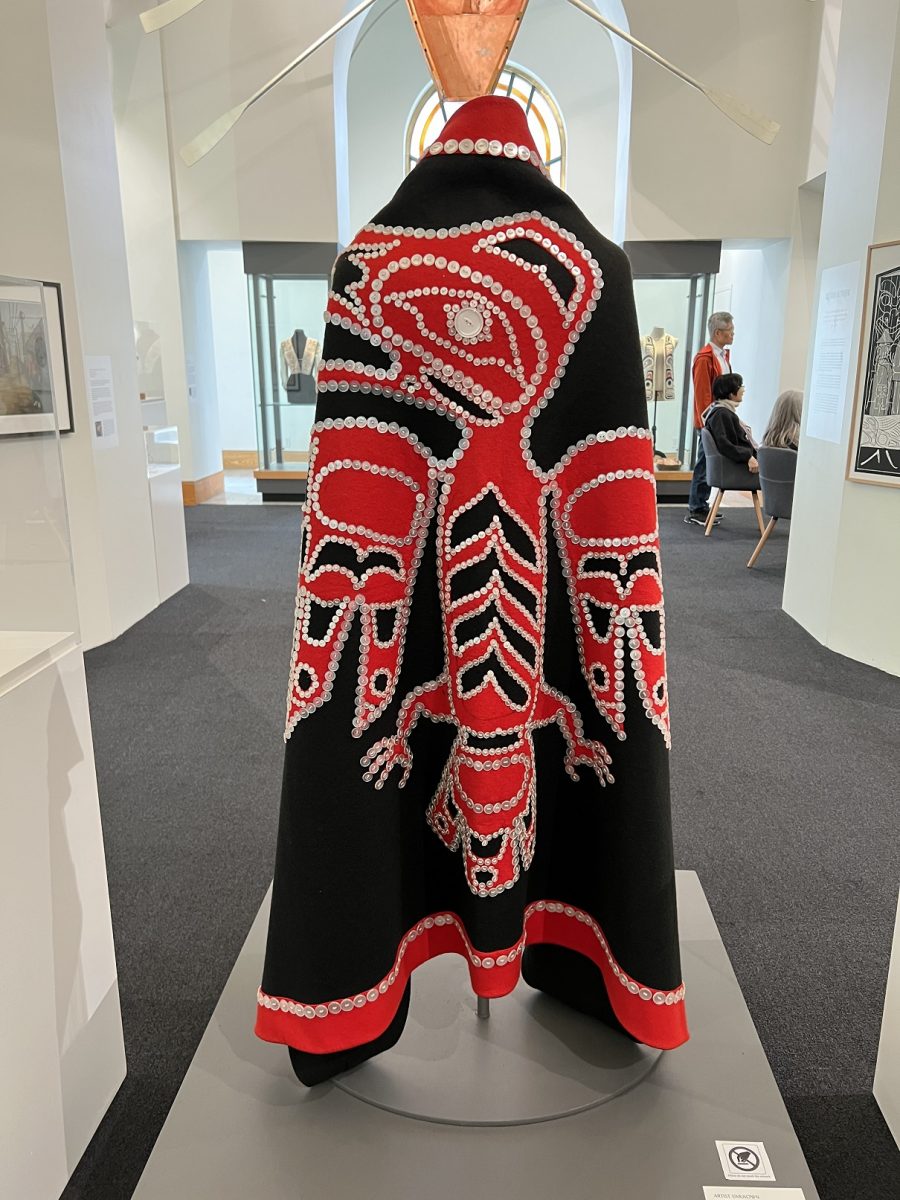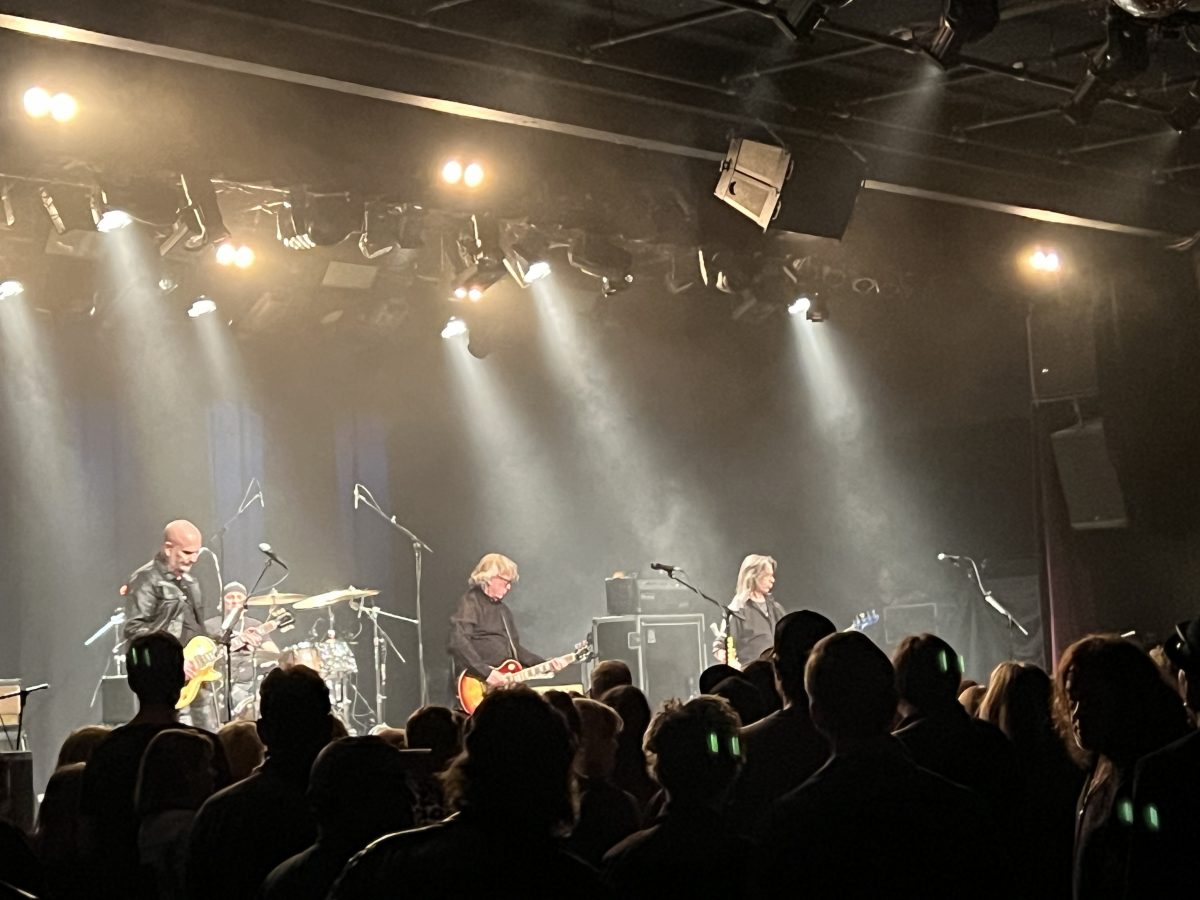Author: Larry St Aubin
Today we head to Vancouver for a 2 day stay. Going to explore Stanley Park and the Seawall. Before we get there, we are going to visit the Capilano Suspension Bridge. Good news about Greta – see below.
The City of Vancouver acknowledges that it is situated on the unceded traditional territories of the xʷməθkʷəy̓əm (Musqueam), Sḵwx̱wú7mesh (Squamish), and səlilwətaɬ (Tsleil-Waututh) Nations.
On our morning walk in Whistler, I come across this piece. The sign indicates I’m not the only one who has difficulty getting around the city. Dwight built a map to help people find places.

I checked it out and still found it confusing

Capilano Suspension Bridge. The bridge was originally built in 1889 by George Grant Mackay, a Scottish civil engineer and park commissioner for Vancouver. It was originally made of hemp ropes with a deck of cedar planks and was replaced with a wire cable bridge in 1903.
We start out on the bridge, not realizing the sway gets rougher as we move to the centre. Greta grips the plank holding on for dear life.

I pick her up so she can get a better view – doesn’t help. There is a light rain so wearing her raincoat. I stand still but as people walk by us, the bridge sways some more.

I ask someone to take our photo. Notice Eve has pressed her belly to the floor. She is not having any of this swaying stuff. She wants sold terra firma. We head back the way we came. If we had gone to the centre, I would have had to carry them both back.

Mackay purchased 6,000 acres of dense forest on either side of Capilano River and built a cabin on the very edge of the canyon wall.
Mackay enlisted the help of August Jack Khahtsahlano with a team of horses who swam the ropes across the river. The ropes were then pulled up the other side and anchored to huge buried cedar logs.
In 1910 Edward Mahon purchased the Capilano Suspension Bridge. “Mac” MacEachran purchased the Bridge from Mahon in 1935 and invited local natives to place their totem poles in the park, adding a native theme. In 1945, he sold the bridge to Henri Aubeneau.
Compare this one to the current one. Nothing to prevent you from falling in other than that rope.

Edward Mahon, who had arrived in Vancouver in 1888, purchased Capilano Suspension Bridge. In 1911, Mahon built the Tea House and continued to improve the property, reinforcing the bridge with additional wire cables in 1914.
“Mac” MacEachran, a former forest ranger, purchased the Bridge from Mahon in 1935. Mac invited local First Nations to place their totem poles in the Park. In 1945, he sold the bridge to Henri Aubeneau and moved to California.

Nancy Stibbard purchased Capilano Suspension Bridge in 1983 from her father Rae Mitchell. Her goal, to elevate the Park from a mere stop-off to a world class destination attraction, was realized in less than ten years. Nancy’s incredible success has included induction into the Canadian Tourism Hall of Fame in 2000.
In the winter there are Canyon Lights which lights up the bridge. Partial proceeds goes to BC Professional Fire Fighters Burn Fund.

Stanley Park. We head over to the sea wall on the east side. In addition to the Vancouver Aquarium, are a number of gardens and memorial monuments. Too much to choose – Air Force Garden of Remembrance, Shakespeare Garden, Stanley Park Rock Garden. I settle on the Stanley Park Rose Garden because dogs are allowed. However I start walking from the information booth. I followed the path but must have taken the wrong turn. I couldn’t find the garden. I went back to the car and found out that the parking I paid for is good for any lot in Stanley Park. I decide to drive to the Totem Poles.
Totem Poles. The collection started at Lumberman’s Arch in the 1920s, when the Park Board bought four totems from Vancouver Island’s Alert Bay. More purchased totems came from Haida Gwaii (Queen Charlotte Islands) and the BC central coast Rivers Inlet, to celebrate the 1936 Golden Jubilee. In the mid 1960s, the totem poles were moved to the attractive and accessible Brockton Point.
The parking lot is right next to them so I carried Greta over. It was very busy. I had to wait awhile to get a photo without people. It’s funny how when people see two pugs sitting there, they avoid crossing over.

The whole park was far too busy. Plus I was getting frustrated with the construction detours, one-ways and Do Not Enter sign. I decided I would came back early on Saturday morning. We did walk for a bit on the seawall if for any reason than justification for driving all the way out here.


The pugs were pretty tired after that so they snuggled into the bed and I headed out to the Bill Reid Gallery
Bill Reid Gallery – “Joy is a well-made object, equaled only by the joy of making it” – Bill Reid, 1988

Bill Reid (1920-1998). There was an exhibition on entitled “Bright Futures”. It not only included works by Bill, but 14 other emerging artists. Bill was an acclaimed master goldsmith, sculptor, painter, writer and community activist. He was born in Victoria, BC to a Haida mother. He began to explore his Haida roots at age 23.


Horse Barnacle Necklace, 1979. White gold and sterling silver

Dogfish Woman Necklace

Haida Beaver, Tsing Serigraph, 1978

Raven Brooch, 1962

Bill studied the artifacts in the American Museum of Natural History in New York. He based this box on one in the museum. He had two of these boxes with lids made. One is displayed here in the gallery. The other contains his ashes and was buried with the mortuary box.
Bill struggled with Parkinson’s disease for the last 30 years of his life. But that did not hamper his creativity.

Killer Whale on Wave Base, 1984

The robe Bill wore when his Totem Pole was raised.

The Raven and the First Men, White Onyx, 1986

“Reid became a pivotal force in building bridges between Indigenous people and other peoples. Through his mother, he was a member of the Raven clan from T’aanuu with the wolf as one of his family crests. Raven is known as a mischievous trickster, who also plays an important part in transforming the world. Many of these traits matched Bill Reid’s personality. In 1986, Reid was presented with the Haida name Yaahl Sgwansung, meaning The Only Raven.”
Tacofino Oasis. Time for lunch. My plan was Toronto to Tofino. However, I got a notice from my Tofino hotel that the government had closed Highway 4 to Tofino. It most likely would not reopen until after I had left the island. The first Tacofino was in Tofino and became a famous taco stand. I’m at this one in Vancouver as a way of touching base with the Tofino I will not visit on this trip. Fish Tacos.

GOOD NEWS We had a vet appointment for 4 pm to have Greta’s corneal ulcer checked. It has greatly reduced in size so it is healing. I’m continuing the one medication plus the lubricant to keep her eyes moist. However, when examining Eve, the vet found a tick. It was removed but I have her and Greta now on tick prevention tablets. I’ll do one more check of Greta’s eye in Winnipeg on our return.
I decided to go to the hotel’s restaurant Stock & Supply to save time. They specialize in charcuterie boards. However it was to be a rock n’ roll night for me so I went with a rock n’ roll meal – burger and beer.

Commodore Ballroom. There were two reasons I wanted to visit Vancouver. One was to explore Stanley Park. The other was to see a concert at the famous Commodore Ballroom.
Opened in 1930 it has featured so many musical legends. Modeled after British ballrooms of the 1920’s, the Commodore Cabaret was designed by Vancouver architect H.H. Gillingham. Gillingham died just after the plans for the Commodore were completed, which left his son, Bruce Gillingham to finish the project. The venue was — and remains today — an outstanding example of the Art Deco style popular at that time.
Wall panel for the Commodore Ballroom, 1929

The dance floor is the bounciest you will ever experience. Why? Because H.H> Gillingham layered it with tires stuffed with horse hair. No one ever thought of that before.

It was the era of the big band. Big names from out of town that drew the crowds included The Dorsey Brothers, Count Basie, George Burns, Rudy Vallee, Stan Kenton, Cab Calloway and the Will Maston Trio, including the as yet unknown Sammy Davis Jr. The full history of the Commodore can be read here.

I said to myself, it didn’t matter who was playing the night I went. It was the venue I wanted to experience. No matter who played, I would by a ticket. Well, it’s Canadian rock band April Wine. They are on a major North American tour and just happened to be playing at the Commodore the night I’m there. The doors opened at 7 and there was already a lineup

Original singer and founder Myles Goodwin has retired, replaced by Marc Parent. I saw them in 1971 or 72 at a rock festival near Galt, ON (now Cambridge).
The Commodore has limited seating. I had to reserve a seat. I first purchased a ticket to the concert from Live Nation. Then went to the Commodore Ballroom website and reserved my table. At my age my legs can only stand for so long. I had a very good view of the stage.

The standing room only crowed began to drift in. The waitress I had loved my Pugalug shirt. She has a dog and I told her about the trip and Eve and Greta. She said they sounded delightful and she wished I brought them.

About 8:45 the band came on and the crowd was cheering.

Here’s a little taste.

You three are brave to do the Capilano Suspension Bridge! You’re in my favourite place on the planet. Paw high fives!
Wow..what a day! Filled with variety, that’s for sure!
That suspension bridge reminds me of the “Carrick-a-rede” rope bridge around the Antrim Coast in N. Ireland! I remember being on that when it was literally just a ‘rope bridge!’ The swaying was awful and on windy days it was closed for safety sake! The three of you did more than well Larry! Here’s to the pugs….Hip Hip Horray! Loved the artifacts at Bill Reid Gallery and the wonderful end to the day at The Commodore! Thanks for the postings Larry! A lot of work and love in each and every one! Here’s to tomorrow! 👍❤️🐾🐾